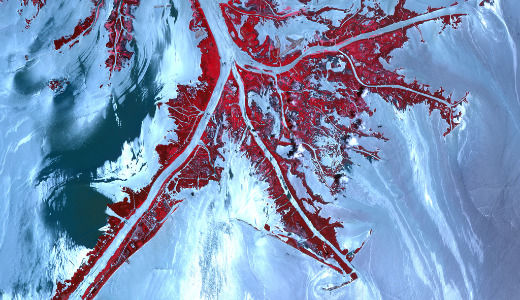
The oil that BP and the government claim is gone from the Gulf of Mexico is actually still there, two groups of scientists said this week.
More than three-fourths of the oil remains beneath the surface and it continues to threaten the eco-system, they say.
A research team from the University of Georgia said Monday that, contrary to the claims, oil that has dissolved is neither gone nor harmless.
“The oil is still out there, and it will likely take years to completely degrade,” said Charles Hopkinson, a leader of the university’s investigation. The marine sciences professor, who also directs the Georgia Sea Grant, said, “We are still far from a complete understanding of what its impacts are.”
The team’s report contradicts government scientists who claimed earlier this month that only about a quarter of the oil remained and that the rest was removed, dissolved or dispersed.
In a news release, the University of Georgia explained the discrepancy between its scientists and the federal experts:
“Hopkinson notes that the reports are at different conclusions largely because the Sea Grant and UGA scientists estimate that the vast majority of the oil classified as dispersed, dissolved or residual is still present, whereas the [government] report has been interpreted to suggest that only the ‘residual’ form of the oil is present.”
Hopkinson said his group estimated how much of the oil could have evaporated, degraded or weathered as of the date of the report. Using a range of “reasonable” evaporation and degradation estimates, the scientists found that 79 percent of the oil spilled into the Gulf remains there.
The scientists said it was impossible for all the dissolved oil to have evaporated because only the oil at the surface of the ocean can evaporate into the atmosphere and large plumes of oil are trapped in deep water.
Meanwhile, scientists from the University of South Florida published additional, equally alarming findings on Tuesday.
They provide evidence that oil from BP’s Deepwater Horizon oil rig has settled to the bottom of the Gulf of Mexico further east than previously believed and at levels toxic to marine life.
Their survey concludes that dispersants sent crude oil to the ocean floor and it has turned up at the bottom of an undersea canyon 40 miles off the Florida Panhandle.
The report says plankton and other organisms at the base of the food chain showed a “strong toxic response” to the oil, and they warned that the oil could surface later.
“The dispersant is moving the oil down out of the surface and into the deeper waters, where it can affect phytoplankton and other marine life,” said John Paul, a microbiologist at the University of South Florida.
Yesterday, meanwhile, some areas of the Gulf were re-opened to shrimpers, many of whom have already had their lives devastated by the spill. But reports are that neither the shrimpers nor their customers are ready to celebrate yet.
One shrimper interviewed by phone said that the areas opened up are sections that have only very small shrimp. During normal seasons shrimpers avoid these areas because only minimal profits are made from the tiny shrimp. He said he and his fellow shrimpers are afraid that when they do go back out in the Gulf they might have to dump their catches because of oil residue on the shrimp. He noted that in any case many shrimpers are still working for BP, skimming oil off the surface of the water. “We know there is still oil out there,” he said.
The disaster began April 20 after an explosion sank the Deepwater Horizon offshore drilling platform, killing 11 men and unleashing a gusher that spewed more than 205 million gallons of oil into the Gulf before it was temporarily capped July 15.
Adding even more to the worries was an announcement Monday night by Thad Allen, the federal government’s disaster coordinator in the Gulf, that attempts to permanently kill the oil well by drilling a relief well have had to be suspended until a new problem is evaluated.
Allen said engineers are now concerned about how to manage pressure in the annulus, a ring that surrounds the casing pipe at the center of the well shaft.
Apparently, the kill procedure that capped the well temporarily also caused the new problem. BP believes that either some of the cement used to cap the well breached the casing pipe and leaked into the annulus, or cement came up into the annulus from the bottom. They are faced with finding out how to safely maintain pressure in the well before they can complete the planned “bottom kill” procedure, Allen said.
Photo: In this color-tinted satellite view of the tip of the Mississippi River Delta, May 24, ribbons and patches of oil that have leaked from the Deepwater Horizon well offshore are silver against the light blue color of the adjacent water. Vegetation is red. (NASA Goddard Photo and Video)












Comments